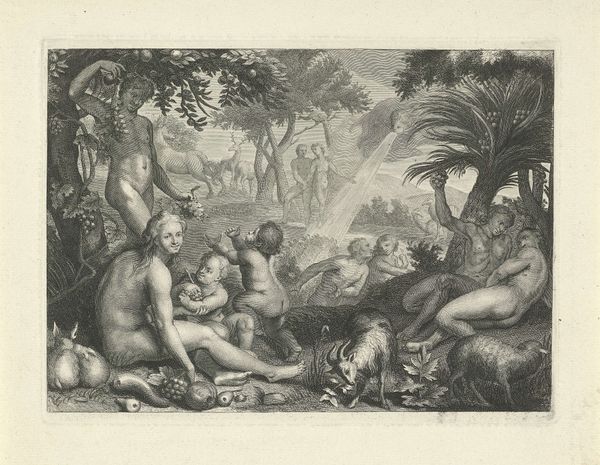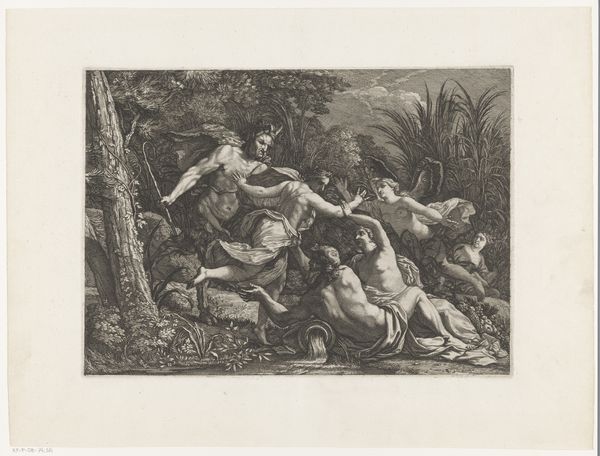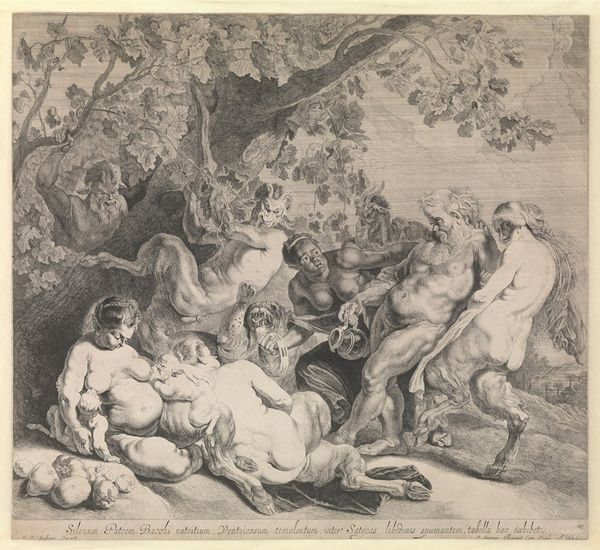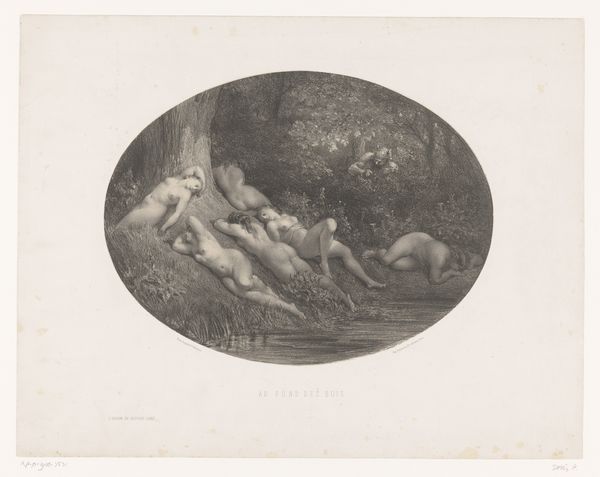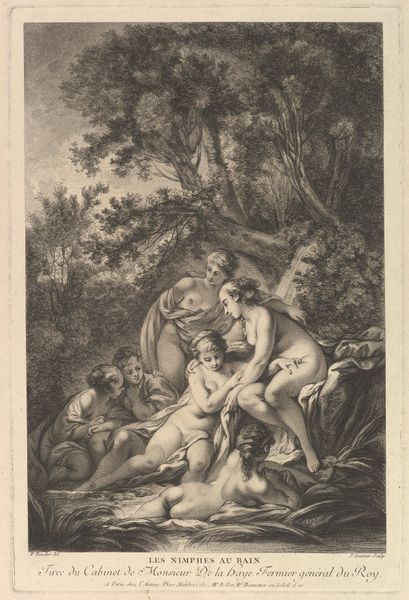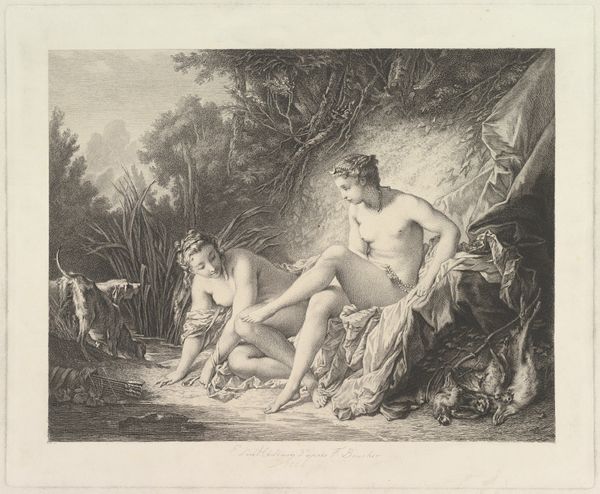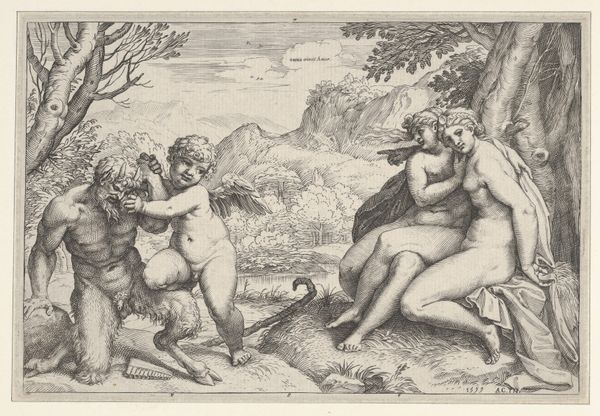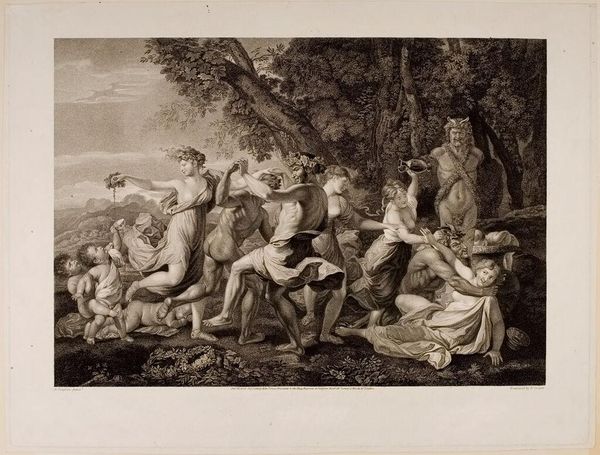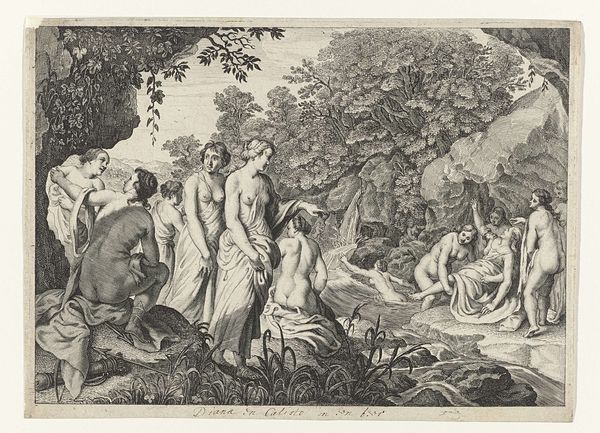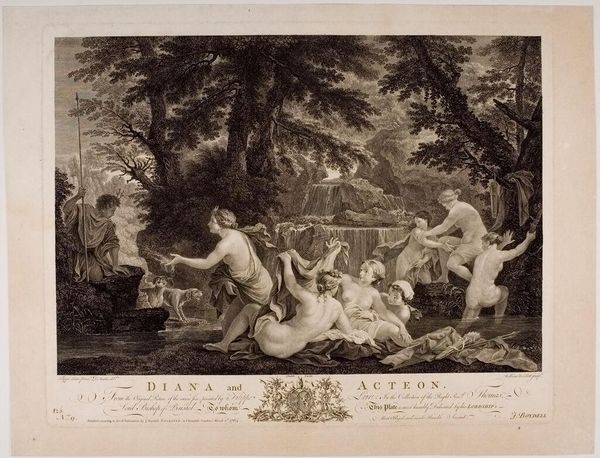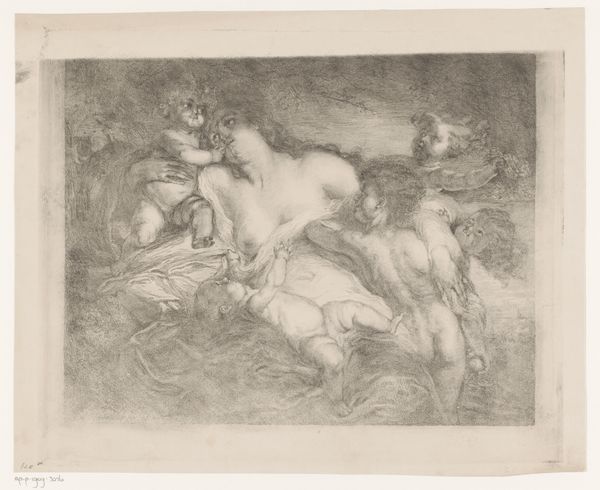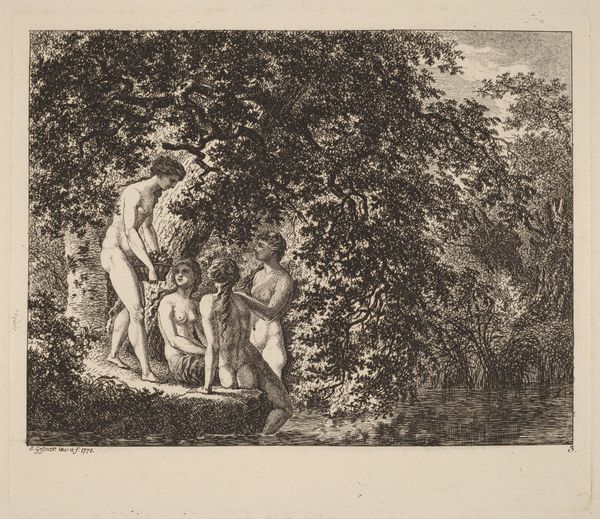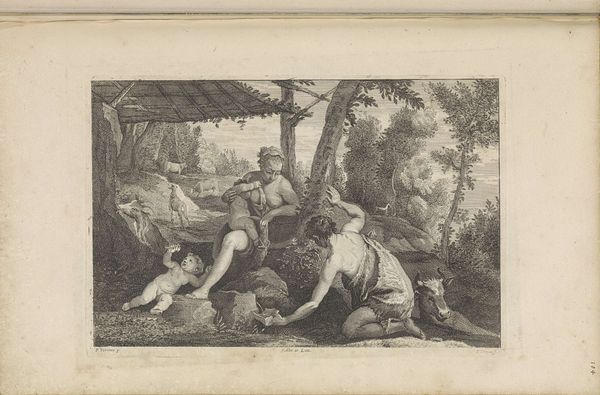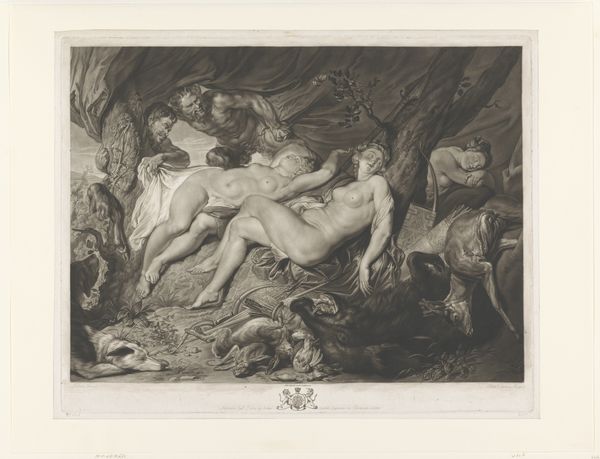
drawing, print, etching, paper, engraving
#
drawing
#
allegory
# print
#
etching
#
sculpture
#
classical-realism
#
charcoal drawing
#
paper
#
genre-painting
#
history-painting
#
nude
#
engraving
Dimensions: 324 × 436 mm (image); 403 × 494 mm (sheet); 420 × 512 mm (sheet)
Copyright: Public Domain
Editor: Here we have an engraving entitled "Judgement of Paris." Its exact date is unknown, but the artist is Richard Woodman, and the work is on paper. I find the poses of the figures somewhat… theatrical, almost as if they're on a stage. How do you interpret this work? Curator: The "Judgement of Paris" is more than just a depiction of mythology; it's a potent commentary on power, beauty, and societal expectations. Considering Woodman’s historical context, how do you think his depiction of these goddesses—particularly their presentation for male judgement—reflects or perhaps challenges the patriarchal structures of his time? Editor: Well, I hadn't thought of it that way, but I guess having these goddesses essentially competing for the title of "most beautiful" does seem to reinforce a pretty narrow view of femininity. It’s interesting to consider how art can perpetuate those kinds of ideas, even when seemingly just illustrating a myth. Curator: Exactly! And beyond the individual figures, consider the socio-political implications. Paris, a mortal man, is given the power to decide which goddess is superior. This reinforces hierarchies of power. Do you think Woodman's piece celebrates this power dynamic, or does it subtly critique it? Editor: It's hard to say definitively. Perhaps by showing the absurdity of the situation, or maybe even highlighting the vulnerability of the goddesses, there could be some implicit critique. It makes me think about the ways women and their bodies are still judged and scrutinized today. Curator: Precisely. It’s through this kind of critical lens that we can see how seemingly historical or mythological works resonate with contemporary issues of gender, power, and representation. This artwork invites us to question not just the aesthetics of the past, but its continuing influence on the present. Editor: This really changes how I see the artwork. It's not just a mythological scene, but also a reflection—and perhaps even a critique—of societal power structures. Curator: And that’s the beauty of art history! It provides a mirror to society, past and present.
Comments
No comments
Be the first to comment and join the conversation on the ultimate creative platform.
